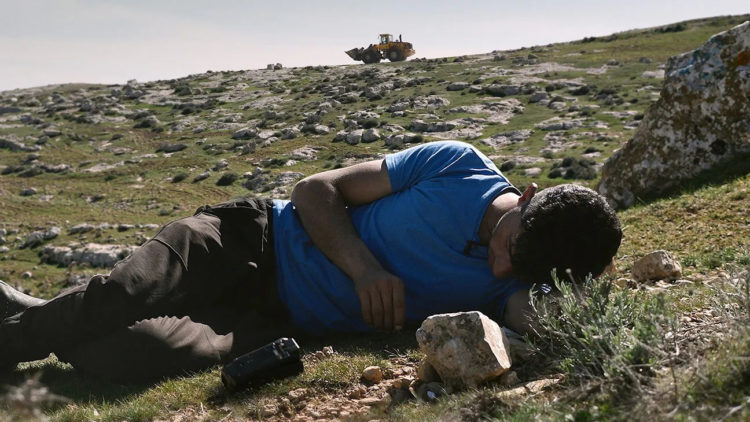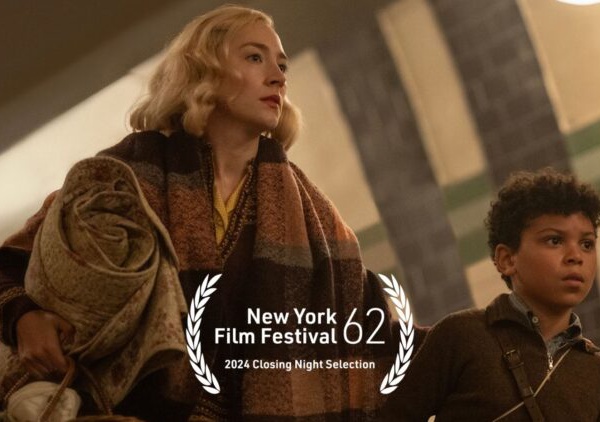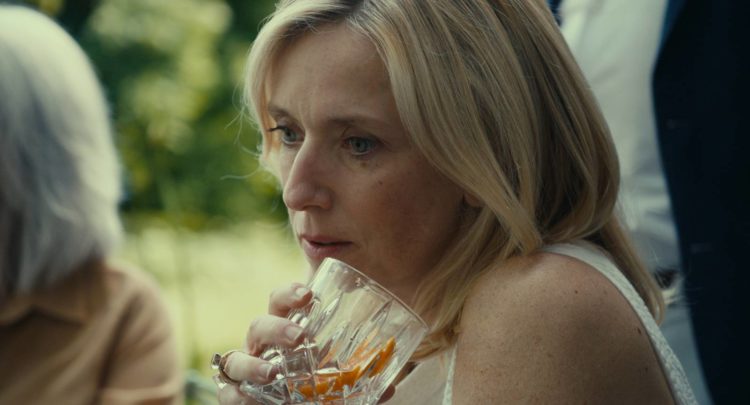

Following The Film Stage’s collective top 50 films of 2024, as part of our year-end coverage, our contributors are sharing their personal top 10 lists.
In a cinematic year as rich and ripe for discovery as any of the most illustrious years in recent memory, 2024 was graced with luminaries operating at their highest level: Denis Villeneuve with the riveting second chapter of Dune; Veronika Franz and Severin Fiala taking on a niche domestic horror epidemic; Brady Corbet tackling the midcentury American dream; Robert Eggers mustachio’ing one of film’s most frightening monsters; Sean Baker bringing the Palme d’Or back to the U.S. for the first time since 2011. Long-gestating stories from living legends: Catherine Breillat on the most devastating age gap romance you can imagine; Víctor Erice on celluloid memory; Paul Schrader on an artist’s mortality; Francis Ford Coppola on everything; Leos Carax on himself. Newcomers we couldn’t forget if we tried: Payal Kapadia, RaMell Ross, and Annie Baker leading the pack with their respective tender-hearted fiction debuts. And that’s only scratching the surface. You can see my full ranked list of the 80 best films of 2024 here.
One of the most prominent themes across 2024 documentaries and fiction films alike was the historical erasure of the eradication of people groups in (more) fucked up periods of the past. Among docs, Sugarcane and No Other Land trace two very different stories, both driven by systemic violence by state institutions toward minority groups that peacefully occupy land that has been cruelly taken from them by their oppressor. Sugarcane follows indigenous survivors of Canada’s boarding schools for indigenous children, which were Catholic-run, mandatory, and ran for over 100 years, generations of indigenous families subjected to their evils. It’s a stirring portrait of both widespread institutional depravity that will sit with you indefinitely and reconciliation that reaches through the screen with a healing touch.
Nickel Boys finds its own lane on the same highway of institutional corruption in the adaptation of Colson Whitehead’s novel set in the 1960s Jim Crow South. It’s a fiction cobbled together by truths––a fiction founded on historical accuracy and a drive to engrain it in our collective cultural memory. As the other films above prove as well as America’s own ugly past, what happens in Nickel Boys is anything but fiction. In the past decade, hundreds of unmarked graves have been discovered at the real boys’ school Nickel Academy is based on.
Between Green Border, Io Capitano, No Other Land, The Brutalist, All We Imagine as Light, Separated, (the 2024 US election), and several others, crossing borders and boundaries was a major theme. Or, more accurately, the seeming impossibility of crossing borders in the socially and politically tense time we live in.
Monstrous yet historically accurate infanticide made quite a wave this year, too, per Sugarcane, The Girl with the Needle, and The Devil’s Bath. When you crunch the numbers, there’s a strong sense of Catholic crime across 2024 cinema, but that’s about as rare a theme as drama is a genre these days. There are simply too many to catch up with for that to fade in our lifetime.
As far as worsts are concerned, Borderlands was so forgettably awful that my brain has systematically removed any trace of it from my memory. Robert Zemeckis’s Here––based on a fascinating concept that I’d love to see another director attempt––is swaddled in an uncanny valley CGI blanket that keeps the story and its core characters miles away on an emotional and psychological level. Few movies in recent memory have Jekyll and Hyde’d as hard as Luca Guadagnino’s feverishly disappointing Queer, which pivots from a delightfully depressing mood of self-destruction in Mexico City to a depression-inducing slog of aimless heroin-induced South American travels, turning a great film into a genuinely difficult one to endure in a single transition.
Deadpool & Wolverine took Marvel’s commitment to parking lot aesthetic cinematography to eleven, proving that the MCU could in fact create an entire feature made up of the ugliest, cheapest, and most heavily CGI’d locations. J-Lo’s cinematic comeback attempt, This Is Me…Now, power ranks among the decade’s hardest to watch. It’s not a horror, but the dread it fills you with might make you second guess that. The Broadway-based Mean Girls remake, which was poised for success, put on a masterclass of poor filmmaking, relying on the shoddy post-zoom effect so heavily that it felt more like a high school slideshow book report than a live-action film. On a much milder note, Wolfs, The End, Gladiator II, The Fire Inside, A Complete Unknown, Y2K, and The Shrouds ran the gamut from forgettable to plain bad despite being some of my most anticipated going into the year.
The crown jewel of 2024 disasters has to go to Emilia Pérez––a film that’s floated through critique and into awards season on its social posturing and performers’ rabid standom––a trans cartel musical thriller so half-baked that, in its thoughtlessness, it ultimately does more damage to the celebration and normalization of trans life, if it makes a dent at all. Written, produced, and directed by white French people and co-led by non-Spanish-speaking actors, the Spanish-language, Mexico-set film has some rapturous moments, but they’re never not surrounded by an onslaught of some of the year’s most ill-conceived. How this came into existence is beyond me but if I think about it too long I lose faith in film so onto some uplifting reflection.
On a personal level, interviews with Robert Eggers, Paul Schrader, Ryusuke Hamaguchi, Payal Kapadia, and The Brutalist composer Daniel Blumberg were as heartening as they were enlightening.
Before the top ten, a note for Megalopolis: anticipating and witnessing the debut of a new Coppola, much less a late-career opus, at Cannes goes down as the most unforgettable cinematic moment of the year. A ride it promised and a ride it was. On another day, Megalopolis would’ve been in this top ten. But after subsequent watches, in all its ridiculous glory, there’s simply too much schlock to rank it among the others here––too many shots and moments as creatively unconsidered as the last shot with the baby through the glass floor or the cringe-inducing pledge sequence to cap it off. For better and for worse, it’s a marvel that must be seen to be believed.
10. Woman Of… (Małgorzata Szumowska, Michał Englert)
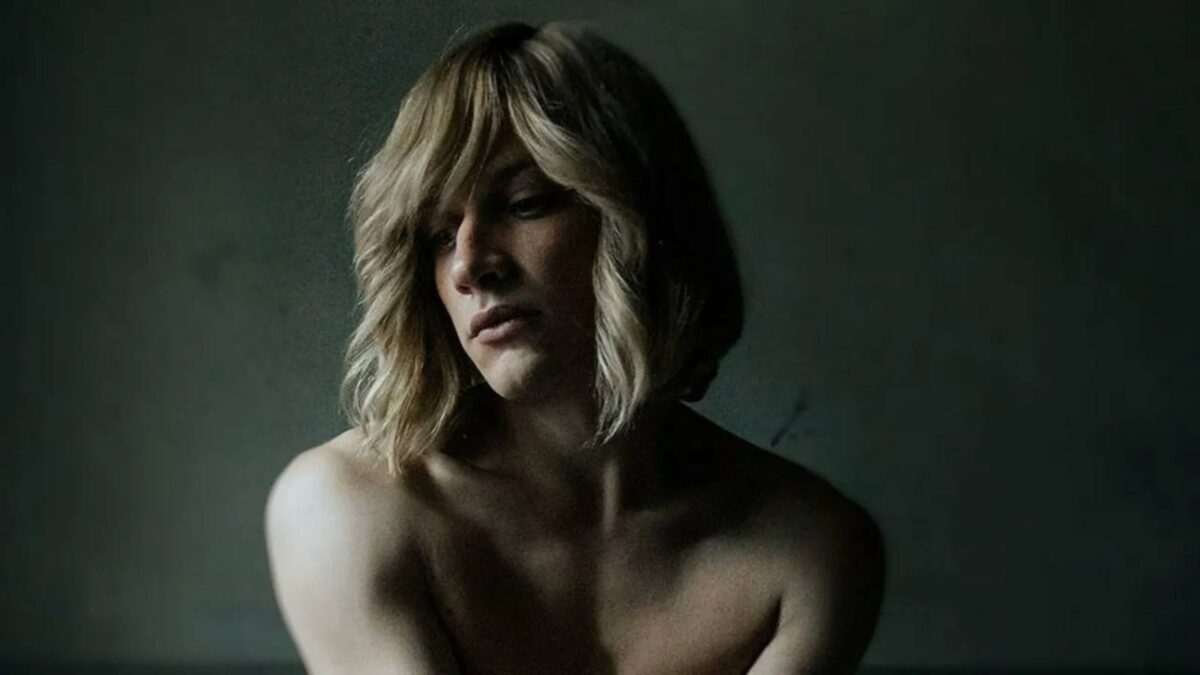
As has typically been the case in recent years, one of the year’s easiest greats to recognize is Polish. The microindustry in Poland has a collective preternatural taste for expressive cinematography and bold storytelling that goes to strange places other people either won’t or wouldn’t think to tackle. Take 2022’s EO, legend Jerzy Skolimowski’s daring remake of Bresson’s donkey-led Au Hasard Balthazar, or 2023’s The Zone of Interest, Jonathan Glazer’s holocaust film that was more Polish-made than it was American-made. The Girl with the Needle, Green Border, and A Real Pain round out the country’s top 2024 offerings, but Woman of… sits on the throne.
The film debuted in competition at Venice in 2023 and somehow fell flat on all US distributors––streamers included––and festivals, going entirely unprogrammed and undistributed for stateside entertainment. In fact, the film has still yet to play in the states at all, despite 2024 theatrical releases in Poland, France, Ukraine, Sweden, Spain, Germany, and the Netherlands. One can’t help but wonder if distributors’ hesitancy comes from the subject matter, the life of a trans woman, but Netflix was quick to pick up Emilia Perez, so that doesn’t add up. Perhaps it’s the thoughtful realist approach of Woman that deterred them, up against Emilia’s poppy, surface-level swallowability.
Over an epic five-decade scope, we follow the arduous life of Aniela Wesoły (an immaculately tender and graceful Małgorzata Hajewska-Krzysztofik) in rural Poland. Once known as Adam, Aniela slowly pieces together her true identity as we witness her grow up, get married, have children, and live out the quietly convicted life of a transwoman in a suffocatingly conservative Polish community. Co-led by Cold War breakout Joanna Kulig – whose role as Adam’s sexually frustrated wife turned Aniela’s intolerant ex is as gut-wrenching as her pipes are soul-piercing––and written with a confidence and empathy that is bound to invade viewers, it’s a trans existentialist anthem that refuses easy answers, binaries, or pity for its lead.
9. Sugarcane (Julian Brave NoiseCat, Emily Kassie)
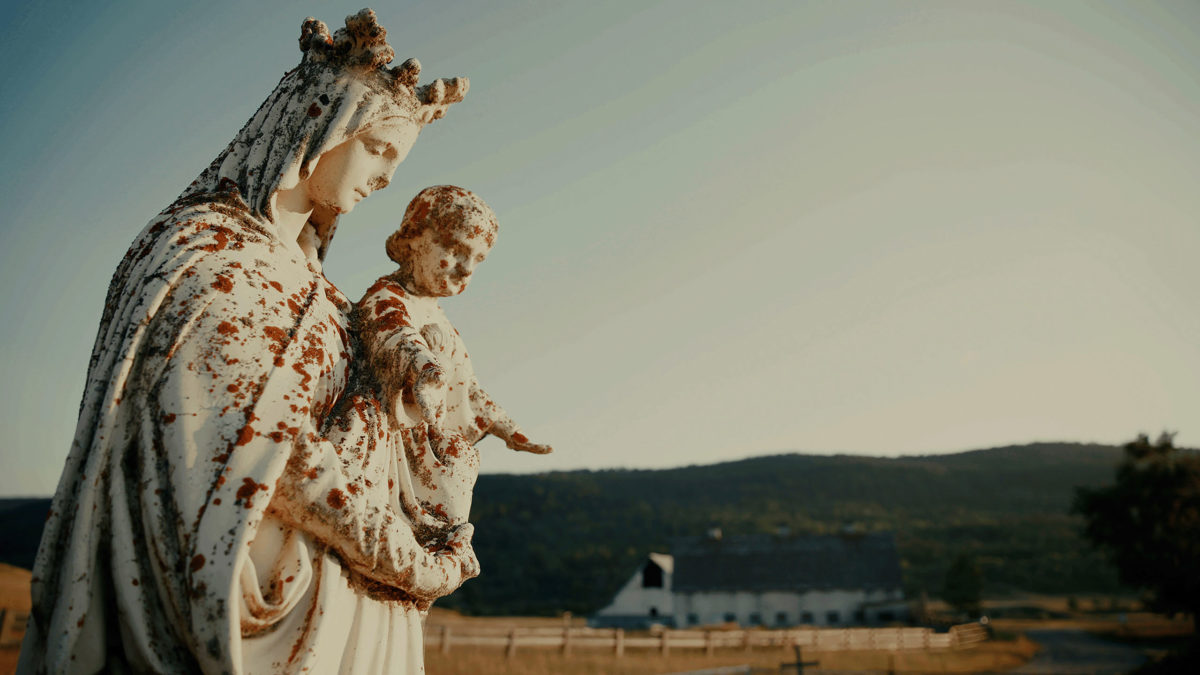
Among 2024’s most notable breakouts, filmmaking team Julian Brave NoiseCat and Emily Kassie have delivered one of the least forgettable docs of the decade. As explained above, the team follows survivors of Canada’s institutionalized indigenous Catholic education program, including members of NoiseCat’s own family. An unending string of shocking discovery and raw feeling I can’t imagine trying to capture in the moment without ruining, Sugarcane is a stirring, rage-inducing, research-heavy swan dive into the trauma of an institutionally degraded people.
As children, some were raped by the priests, their babies thrown into an incinerator by the nuns cleaning up after the crimes. One––with what comes across as a confusing Scottish accent for an indigenous man living in Canada––uncovers his unfortunate lineage in real time, learning he was born at the school as a product of rape, offering a dark, hereditary explanation for the accent after the fact (their priest was Scottish). Meanwhile, contemporary investigators, led primarily by survivors, search the grounds for the unmarked graves of children and try to confront the few still alive that were at least partially responsible. It’s one of those rare docs that, despite being in its subjects’ faces, makes it feel like there’s no camera present, like you’re actually in the room with the filmmakers.
8. Evil Does Not Exist (Ryusuke Hamaguchi)
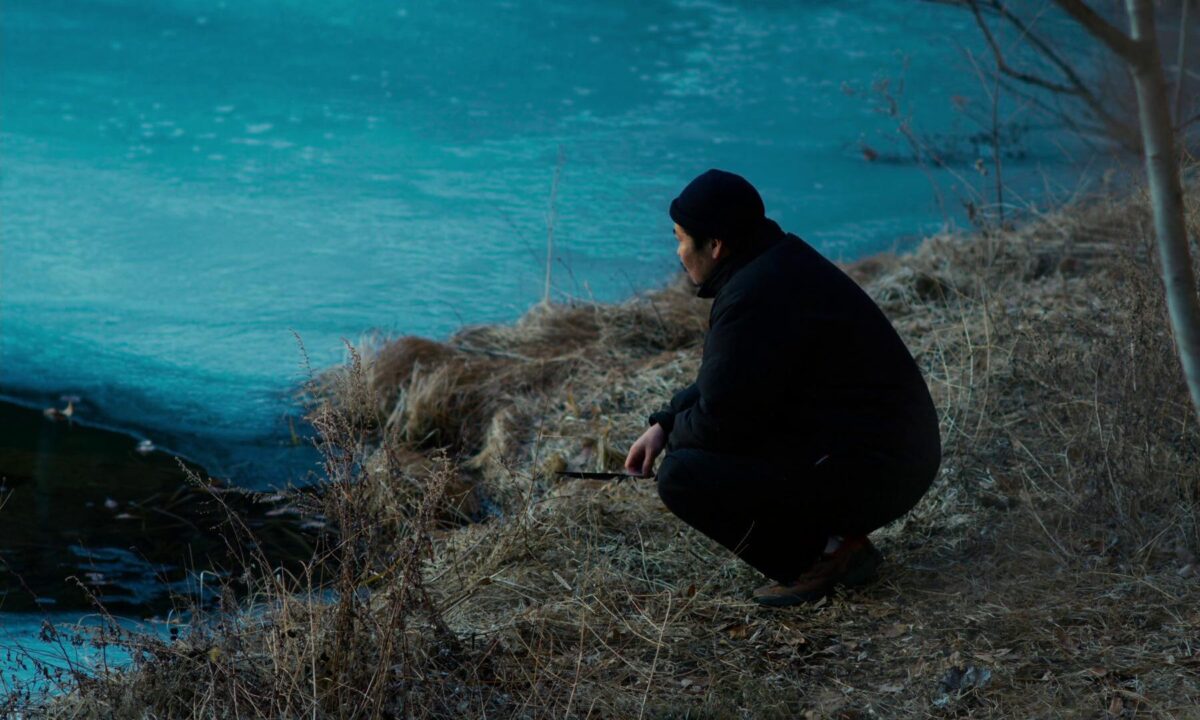
It’s one thing to get to sit down for a conversation with Hamaguchi on the Italian clay courts of the Lido in the summer (okay, technically that was last year, but the interview went up in mid-2024, so…), but it’s another thing entirely to get to talk to the Japanese veteran about one of his best films, Evil Does Not Exist, described here as I describe it in the interview: “A tender, icy ecological fable that culminates in stitches of profound ambiguity, Evil is the kind of film Hamaguchi knows critics and cinephiles will discuss into the ground. Much like the mystifying Asako I & II, the memory-melding Wheel of Fortune and Fantasy, or the enigmatic epic that was Drive My Car. The plot is simple: a small village outside of Tokyo tries to keep a corporation from building a glamping site nearby that will desecrate their community. But the implications and themes at work are nuanced, weaving a dense web of a narrative grounded in Hamaguchi’s richly drawn characters.” It’ll keep you guessing long after it’s over, as so many of the best films do.
7. It’s Not Me (Leos Carax)
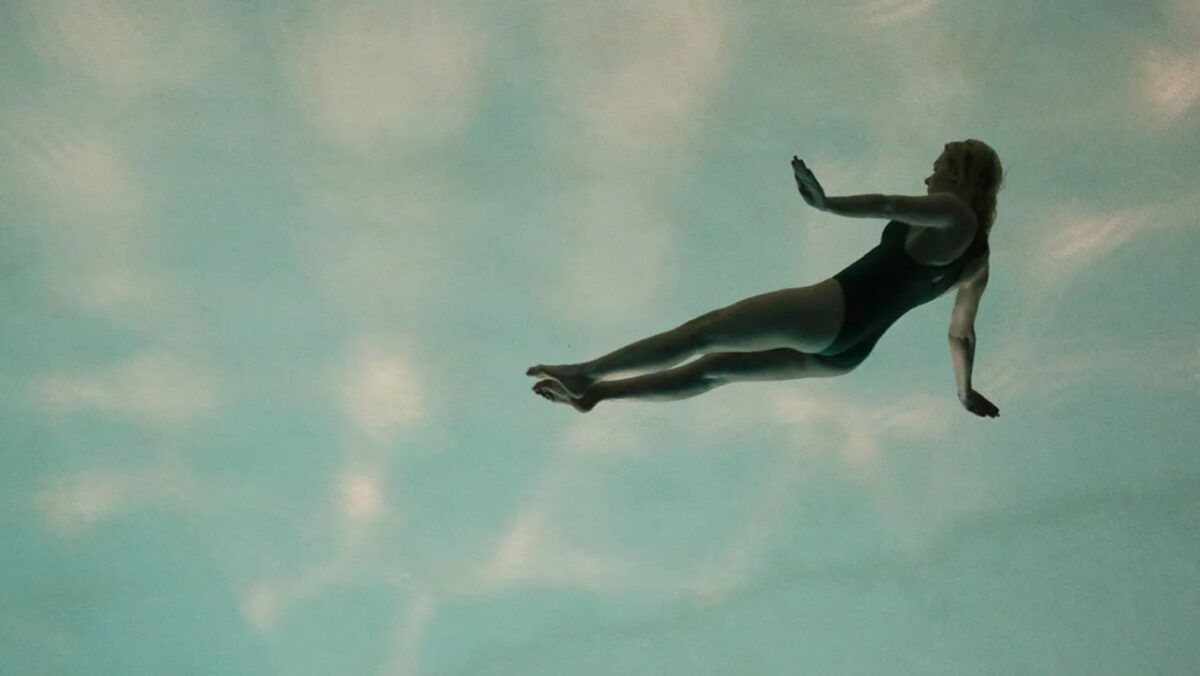
How to begin describing Leos Carax’s brash experimental memoir documentary? The avant-garde French director leans into his style and reputation harder than he ever has to tremendously thought-provoking effect. In 41 minutes, the film happens in a flash, a lightning-paced personal diary of hilariously inane reflections, rhetorical questions, and life anecdotes that feels like it was made by late-era Godard. If you’re unsure about your experimental film tolerance, watch the trailer. It will give you a great sense in less than a minute. If you’re unsure but feeling bold, go in blind. It’ll be over before you know if you like it or not.
6. The Devil’s Bath (Veronika Franz, Severin Fiala)
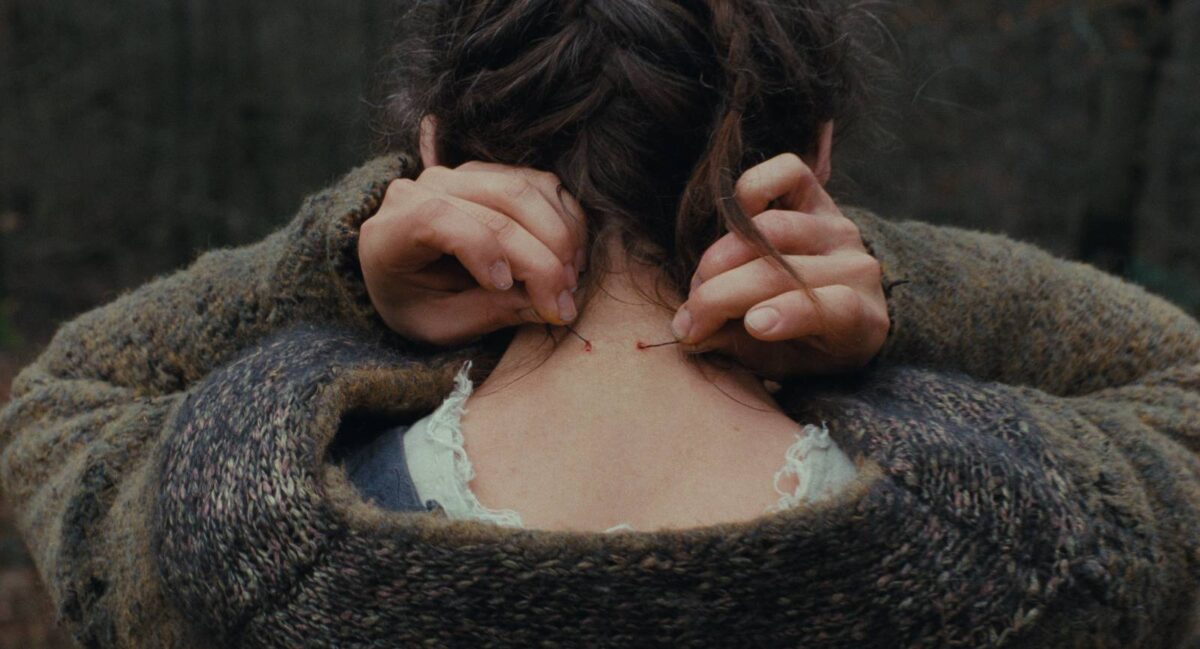
Five years after their English-language debut, cinephiles’ favorite Austrian aunt-nephew directorial duo is back in Austria with a historical PSA unlike any you’ve heard. In 18th century Austria, an incredbily religious newlywed woman has no choice but to move to her husband’s village and take on the duties of a housewife of the time. As boredom and depression start to consume her, a way is all she can think about – a way out at any cost. Anja Plaschg gives arguably the year’s greatest performance in her ever-devolving portrayal of a housewife from another era, one that culminates in a confessional scene for the film history books.
To reveal what the story’s getting at would be to spoil the mystery that keeps you hanging on until the horrifyingly gleeful final moments. But it fits in harmoniously with I Saw the TV Glow’s anti-suburban, anti-domestic, anti-norm-following themes while sharing almost nothing else in common with the trans allegory. The connection between the two goes to show how universal and long-held the disease of dormant domesticity has been in societies across time and space.
5. Dune: Part Two (Denis Villeneuve)
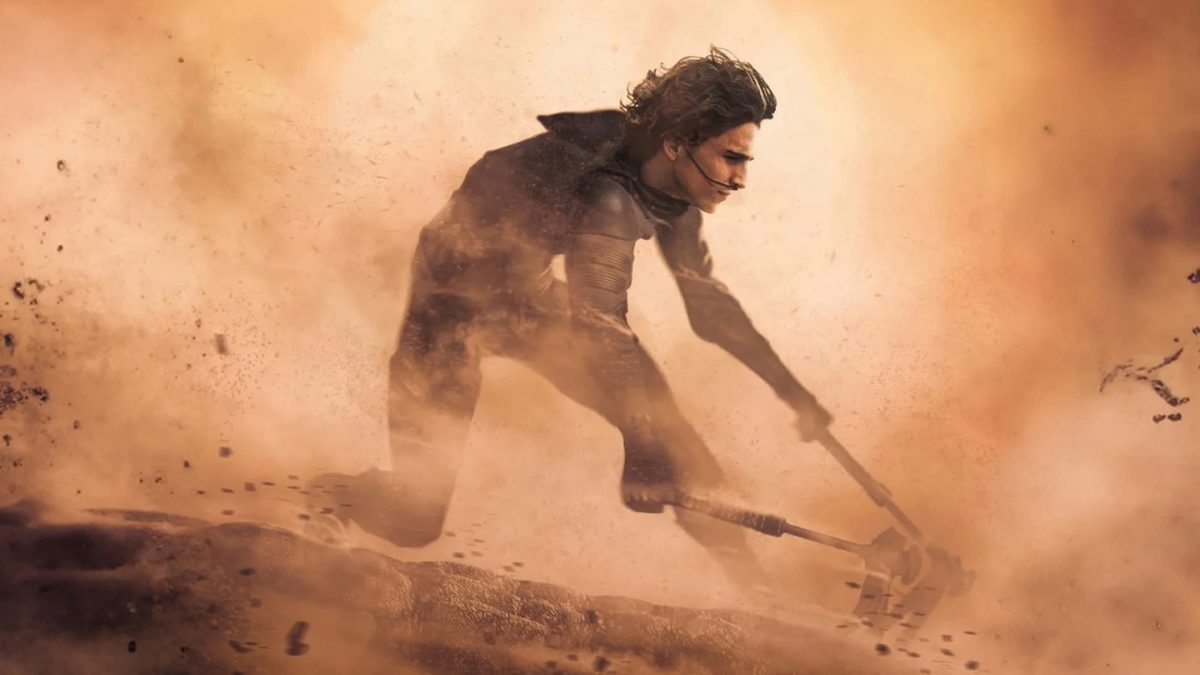
Spielberg, Nolan, and Villeneuve make up the holy trinity of filmmakers Hollywood studio executives trust more than themselves. In other words, they’re the only ones allowed to dream up the look, feel, and, ultimately, cut of a blockbuster with the full resources of its enormous budget, which makes a new release from any of them a terribly exciting prospect. How they’ve done it is something that must be seen to be understood, and Dune: Part Two is a perfect example in the French-Canadian director’s case.
For those in the narrative dark about Dune, Part Two is a heart-stopping, jaw-dropping, mind-bending shift into new territory––a chilling condemnation of the charismatic messiah character as relevant today as it was when it came out. Villeneuve works wonders with the story visually, but its his adherence to the shocking complexity of the characters and their unexpected beats that lodges the story in your psyche. The book earned its renown through sheer storytelling guts and a tactful literary approach to metaphorically shitting on everything we worship in the real world. The film achieves the same.
For our Best Cinematography piece, I wrote on Greig Fraser’s camerawork: “Veteran DP Greig Fraser took a nearly insurmountable task composing the visual imagination for one of the most anticipated, feverishly cared-about sci-fi franchises in film history. With a story as imaginative as Dune, readers and fans can’t help conjuring their own imagination while reading the books, the masses automatically carrying strong opinions on cinematographic aesthetic into the screening. Yet, through two entries, Fraser has managed to eclipse everyone’s personal vision of Dune with his own, the lensing, coloring, and camerawork both distinctly captivating and reflective of the text in a way that gives the film a textual depth even in silence. As if the numerous cosmic and desert aesthetics seen in Part One weren’t enough, Fraser piles on new unforgettable looks: the ghostly black-and-white of Giedi Prime’s trippy negative daylight, the burnt oranges of a sandy solar eclipse, the chrome of epic war, and a camera in utero.”
4. All We Imagine as Light (Payal Kapadia)
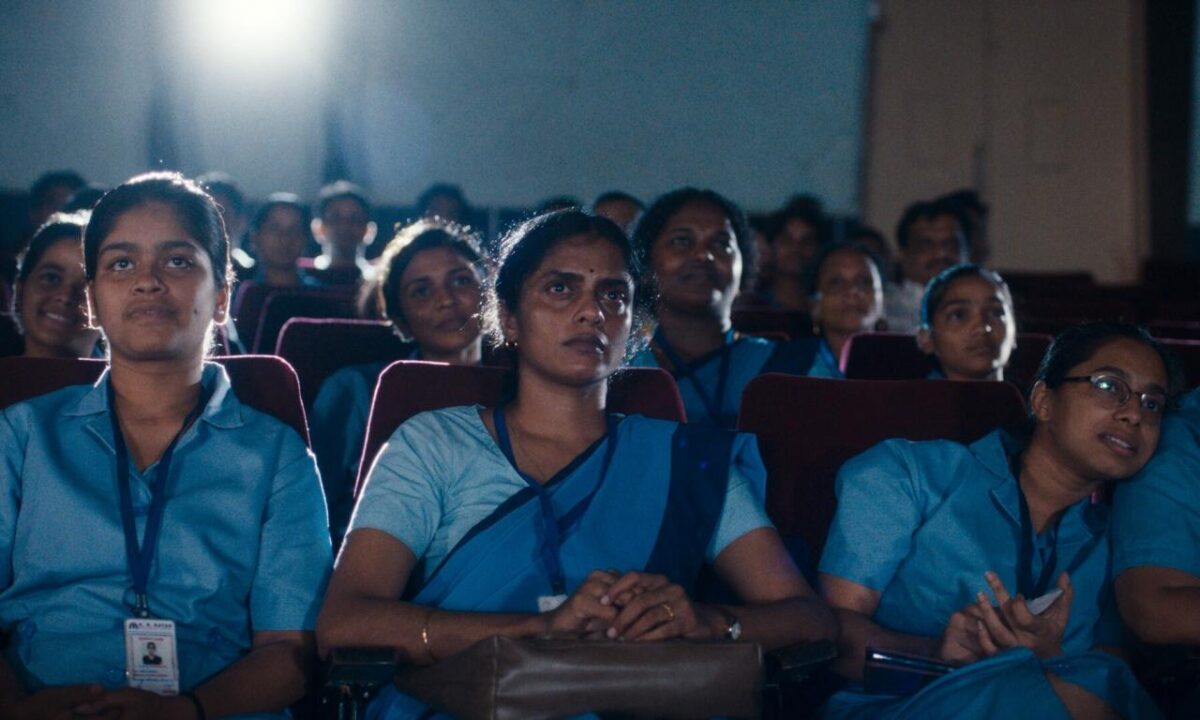
At Cannes, I reviewed Kapadia’s terrific Grand Prix-winning fiction debut, a polar opposite compared to the lone experimental documentary to her name prior to 2024. As mentioned above, I also had the privilege of talking with Kapadia shortly after she was inducted into TIME’s list of 100 most influential people on the rise, which you can read here.
3. Nickel Boys (RaMell Ross)
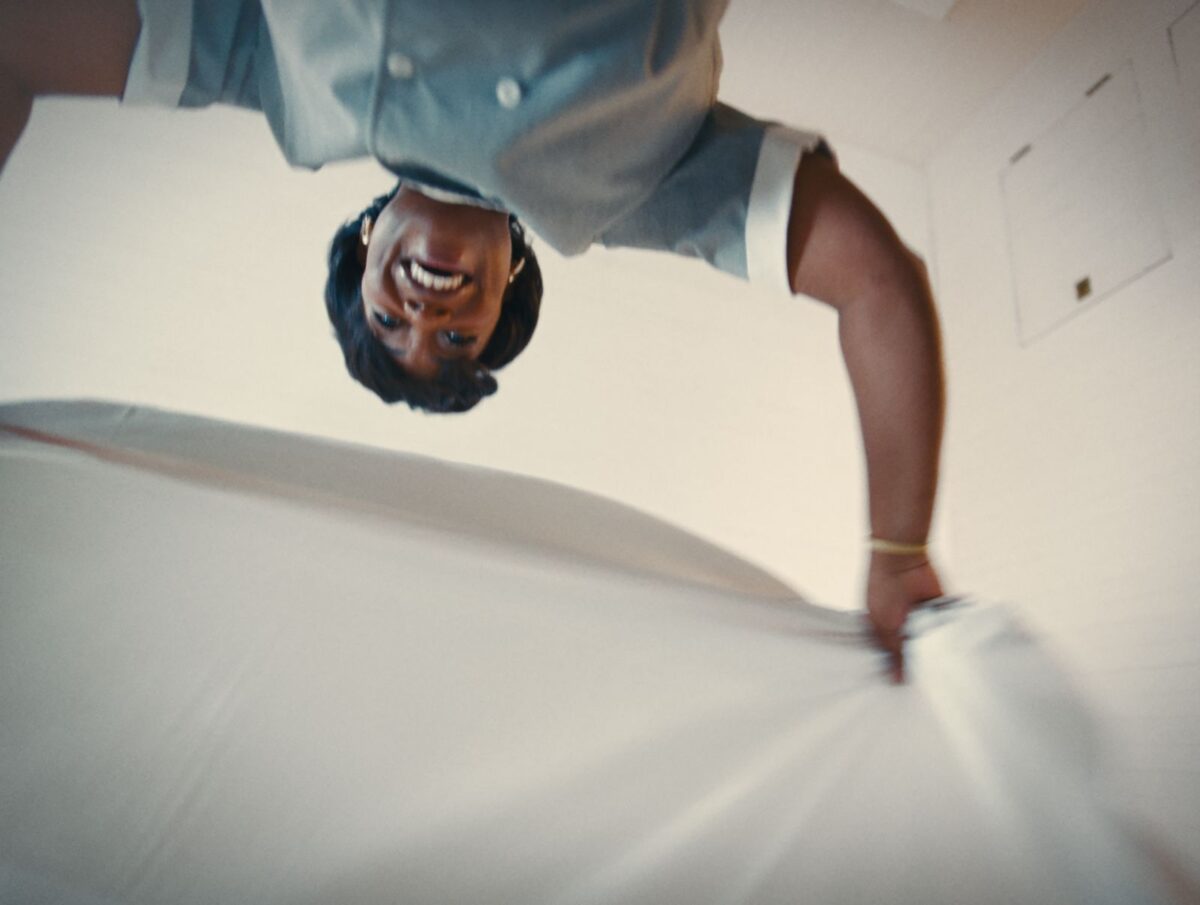
It’s hard to believe that Nickel Boys is RaMell Ross’s fiction feature debut. Equal parts revolutionary and culled from its artistic influences, the film’s assured direction feels like a fresh blend of cinematic sensibilities for a new wave of visionaries. I wrote on the film for our Best Cinematography, Best Performances, and Best Films of 2024 pieces, reproduced here in that order:
“Where most films have found their place on this list for aesthetics, textures, and tasteful restraint, RaMell Ross’s Nickel Boys––which flourishes in all three categories––has earned its place on additional merits: novelty and no-fucks-given. When Hardcore Henry forgettably hit cinemas in 2015, it all but guaranteed the immediate death and eternal lack of interest in first-person filmmaking. Nine years later, Nickel Boys cinematographer Jomo Fray has proven Henry was nothing more than a false start for the divisive approach. Working almost entirely in first-person, the DP behind last year’s brilliantly shot All Dirt Roads Taste of Salt uses the method to innovative effect, capturing gorgeous, contemplative, abstract slices of life from a perspective previously unseen, imperatively slotting the viewer into the lead’s body in a film that asks us to walk a devastating mile in his shoes.”
“If they gave an Oscar for Best Ensemble, this would be your front runner. RaMell Ross’ stylistically daring Nickel Boys tells the story of a group of Black boys wrongly imprisoned in a juvenile correctional institution where they’re regularly abused by a racist staff. In first-person we see most of the film from the lead Elwood’s perspective, played wonderfully in three phases by Ethan Cole Sharp, Ethan Herisse, and Daveed Diggs. Brandon Wilson is terrific as Turner, Elwood’s best friend at the facility. Aunjanue Ellis-Taylor plays Elwood’s endlessly worried and doting grandmother with courage. Hamish Linklater is rage-inducing as one of the institution’s strictest enforcers. Even Fred Hechinger, who’s had an explosive past year, sneaks in a soft, sinister performance worth remembering.”
“RaMell Ross––the Brown University film professor and writer-director behind 2018’s stunning impressionist portrait of rural Alabama life, Hale County This Morning, This Evening––made a splash with his second film and fiction debut Nickel Boys. This adaptation of Colson Whitehead’s novel is a tender, enchanting movie that quickly develops a mood-defining dread stemming from America’s ugly history with abusive juvenile centers for Black boys. Innovatively shot in first-person to gripping effect, it follows Elwood Curtis, a young man wrongly detained at the Nickel Academy, as he develops a life-changing friendship and navigates the nightmares of Nickel, where the unmarked graves of rule-breaking children haunt the kids who still have to walk its grounds. Bouncing back and forth between Elwood’s days at Nickel and his adult life researching its crimes, Ross submerges us in what feels like a lifetime of beauty and trauma.”
2. Last Summer (Catherine Breillat)
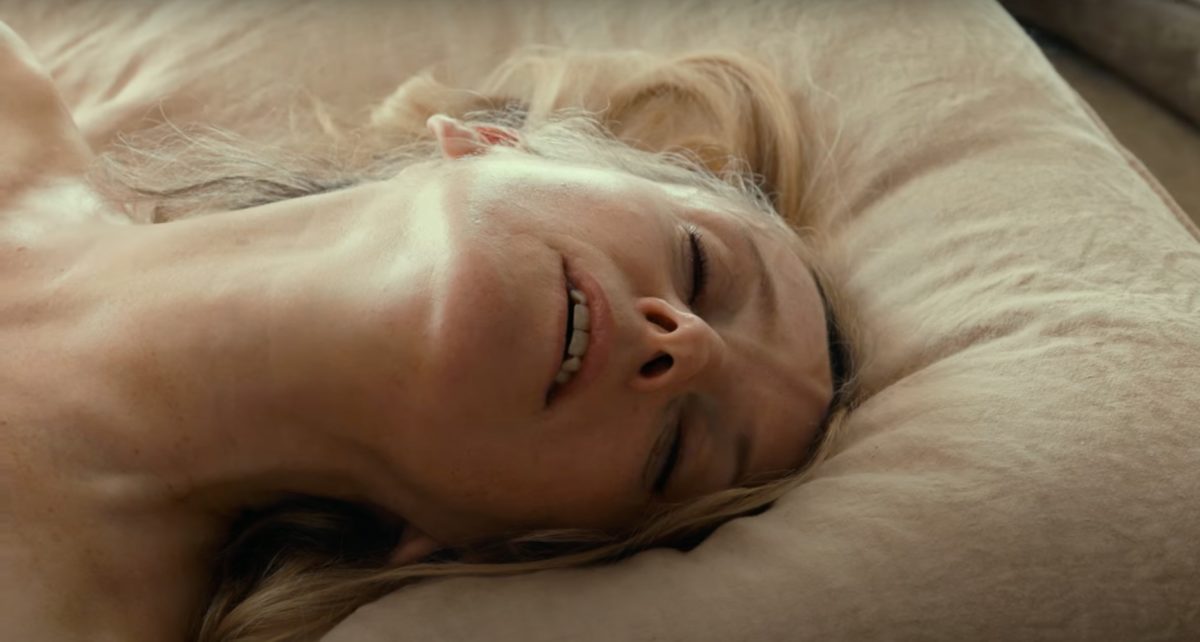
For The Film Stage’s Best Performances piece, I wrote on Last Summer’s licentious lead, who breaks boundaries that should never be broken and whose salacious desires are so debased they’re bound to make your own feel like charity work:
“When I saw Catherine Breillat’s return to form at Cannes 2023, I thought the shock would fade, as so many cinematic experiences do. I thought the film was more of a provocation spectacle than anything else, albeit a juicy one. 18 months later, Léa Drucker’s contrite orgasmic gaze is still branded on my brain. The French veteran’s electrifying, shame-ridden turn as a woman who develops an affair with her underage, repulsive bad boy stepson marks, quite simply, one of the decade’s finest performances. As if that isn’t enough, Drucker’s Anne works as a successful lawyer who represents child victims of sexual assault, the layers between the character’s work, existential motivations, and guiding ethics––a rich mélange of deliciously fucked-up drama––never fully excavated the way they might be in a Hollywood version of the same story, Breillat having always understood the cinematic strength in dwelling on inexplicable ambiguity and human depravity.”
1. The Brutalist (Brady Corbet)
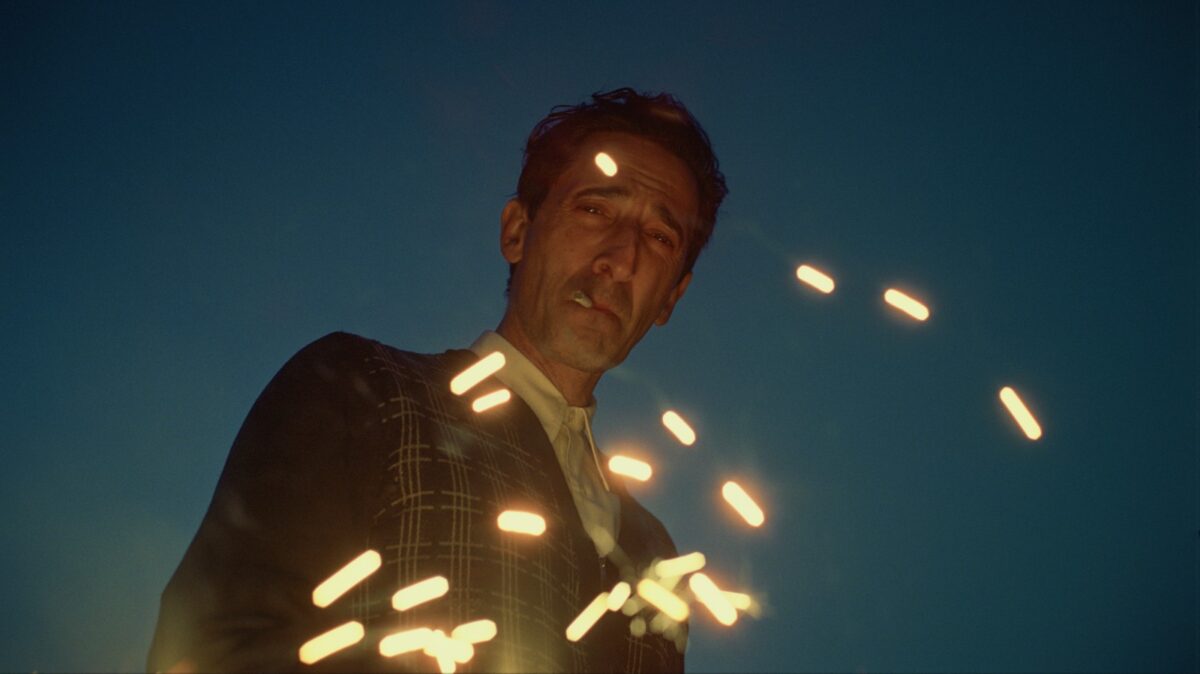
For Paste Magazine, I went long in my review of Corbet’s towering epic, my favorite of the year. I also wrote about Lol Crowley’s stunning cinematography for The Film Stage’s list of Best Cinematography of the year. And I wrote a bit on it for our 50 Best Films of the Year list, which I’ve reproduced here:
“Brady Corbet’s long-gestating architecture epic looks and feels as painstakingly crafted as its lead character’s intricate architectonics. For as barren and minimalist as László Tóth’s (a terrific Adrien Brody) designs are, they pack a beautiful, mysterious, occasionally revelatory punch, much like Corbet’s winding three-and-a-half-hour (complete with built-in intermission!) story about a Hungarian architect who immigrated to New York after WWII only to be mentally and emotionally sucked in by the tide of a momentous decades-long project initiated by a ruthless Pennsylvania business tycoon. Its scope is enormous––almost impossible not to get wrapped up in. A sense of impending gravity gives this film the weight of the real, as if we’re witnessing history. Cinematographer Lol Crawley captures sprawling green hillsides, gleaming Italian marble mines, immovable caves, and towering opuses in a dark, richly textured VistaVision that’s like a magnet for your eyes, and composer Daniel Blumberg, in his second score ever, locks you in with galvanizing refrains that keep The Brutalist chugging along at a mean rate, radiant floating pianos disarming you to characters’ sympathies.”
Honorable Mentions
First honorable mentions go to: Nosferatu, Anora, Hard Truths, Megalopolis, The Beast, His Three Daughters, Oh, Canada, The Human Surge 3, Apocalypse in the Tropics, No Other Land, Close Your Eyes, Green Border, Janet Planet, The Substance, The Seed of the Sacred Fig, A Real Pain, and I Saw the TV Glow.
And second-tier honorable mentions go to: Io Capitano, Juror #2, Between the Temples, Christmas Eve in Miller’s Point, Ryuichi Sakamoto | Opus, Horizon: An American Saga – Chapter 1, I’m Still Here, Wild Wild Space, Maria, Rebel Ridge, Small Things Like These, Hollywoodgate, The Girl with the Needle, The Bikeriders, Made in England: The Films of Powell and Pressburger, Universal Language, Drive-Away Dolls, In a Violent Nature, Challengers, Bird, Love Lies Bleeding, and Santosh.
There are at least 30 more worth watching that I haven’t named, but I’ll leave it at a clean 50 here. For the longer list, check out my full ranking of the best 2024 movies.
The post Luke Hicks’ Top 10 Films of 2024 first appeared on The Film Stage.


